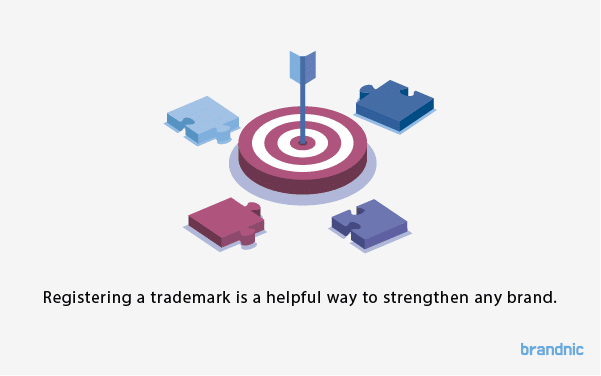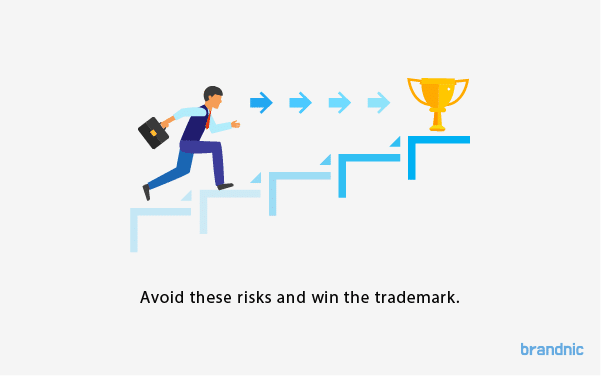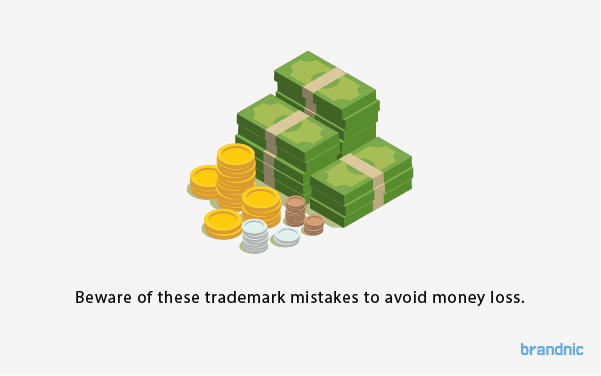Read Time: 11 minutes
The whole concept still creates a lot of confusion, therefore here you have the ultimate guide to claiming dead trademarks.
Why are trademarks important for your business?
Understanding how trademark business work is the first tip you should definitely know.

Trademark protects your branding.
For instance, a trademark is the legal form of a brand name. They can include symbols, words, a slogan or anything that helps identify an entity, business or product.
A trademark protects your business from any attempts to create similar products and steal your company’s identity.
There are many other benefits that trademarks bring that you should take into account.
Reasons to trademark your business
Intellectual property (IP) continues to be the most important strategy to protect your business’ products and services. Here are some of the main advantages of trademarking your business.

Trademark can bring life to a brand.
- Easier for customers to identify
Everyone prefers buying a product that comes from a trustworthy business. In fact, your customers will immediately relate your services and goods to the trademark you chose instead of going to a similar company.
- Boosts business reputation
It’s not just about differentiating you from your competition. Trademarks can quickly gain trust and become a highly valued IP which means that you’ll attract more customers in no time! Furthermore, it shows you produce quality goods as well as services.
- It can become a transferable asset
As the more value, your trademark gains the more business deals you can negotiate. That’s right! Registering a trademark is a helpful way to strengthen any brand while you protect your investments.
Everything sounds beneficial for your company, but unfortunately, there are some cases where businesses are not eligible for trademarks.
Can your business be eligible for a trademark?
A brand should be unique and commercializing its goods in order to apply for a trademark. According to US Patent and Trademark regulations, you can still acquire a trademark if you present a good faith argument showing your plans for commerce in the future.
Despite the clear requirements, studies suggest that 60% of the trademark registrations fail the first time.
There are many reasons why this happens, but most of them lead to a category called dead trademarks.
How does a trademark become dead?
Trademarks don’t have an expiration date, therefore they are considered “dead” when the trademark office, where it was registered, stop recognizing as a legal mark. Yet, it doesn’t mean the mark has completely disappeared, other companies are allowed to acquire this type of trademark. Once this happens, the previous mark holder can no longer use that trademark.

Acquire a trademark if you present good faith of using it.
It is also known as an “abandoned” trademark and it gains its title from circumstances such as:
- The requested paperwork wasn’t filed on time.
- Incomplete responses.
- Not paying the annual fees.
Even though trademark offices allows the applicant to resume the registration after failing the first time, most of these marks are abandoned and listed as dead trademarks.
Nevertheless, it doesn’t mean that the mark is completely available to be used by another individual.
Some cases show that the original owner may have continued to use the abandoned trademark.
Try to remember this because it will be a key element up ahead.
Purchasing an abandoned trademark – steps to follow
Reviving a canceled trademark is possible as long as you follow the right steps. However, there can be potential issues while registering a dead mark.
For instance, penalization under common law rights or failing to provide the necessary files.
In order to avoid these risks, you should consider the following tips:
1.Perform a trademark search
This is the crucial step to determine whether the abandoned trademark is worth the risk or not.
When a company wants to register its brand as a trademark, they usually go to an official trademark office such as the U.S. Patent and Trademark Office (USPTO).
2. How do you apply for a federal trademark?
The process is simple; business owners must provide as much information as possible.
Nowadays, they also require registering a web extension so the new trademark can get the broadest protection.
Some of the information stays at USPTO’s database which is the exact evidence you need to buy the dead trademark you want. Your detective research starts at USPTO where you can check the current status of that trademark.
The specific tool you are looking for is called the Trademark Electronic Search System (TESS) that will help you solve some of the essential questions before purchasing a canceled trademark.
3. When was the trademark abandoned?
Trademarks don’t expire, but mark holders are required to update the proper paperwork as well as paying a fee after a certain period of time. In the case of the USPTO.
It may take 3 to 5 years before the mark is classified as “dead”.
We mentioned above that the original owner of an expired trademark can still have some rights over the mark. This risk essentially comes from the Lanham Act.
It protects the trademark from being abandoned until there’s enough to prove that it won’t be resumed for use. Even though the USPTO doesn’t consider it as a “live” (active) trademark.
The previous mark holder can be using it for his business. Determining how long a trademark has been dead establishes your chance of acquiring the mark.

Avoid these risks and win the trademark.
For instance, if a trademark hasn’t been used for at least 3 years, it’s more likely that it is considered abandoned and, therefore, yours after some time. Understand that, sometimes, you must prove in court the original mark holder doesn’t intend to continue to use it.
Moreover, there’s a risk that the owner wants to fight for his vintage trademark. We recommend contacting the original applicant if possible before continuing with your plan. It is important to prevent as much as possible in order to avoid future legal problems.
Important tips:
- There are many trademark offices around the world. You can always conduct a global search if you want to use your trademark internationally.
- TESS determines whether a trademark is abandoned or not. If it is still active, your only option is to buy it directly from the current owner.
4. How did the trademark die?
The trademark marketplace contains many inactive marks ready to be revived again. It is crucial, however, to find out the reason why they gained that status.
Some of the causes were mentioned above, but now we’ll study how they can affect your trademark application.
For example, if the reason was a lack of proper paperwork, the trademark may still be used in commerce and protected by the common law rights.
Let’s think that Harry Potter wasn’t maintained as a trademark,
But its products are still on the market and recognized as part of the mark. If you try to register “Harry Potter” in the USPTO, you can probably be sued by the original owners even though the brand is supposedly dead.
There are other cases where the trademark is canceled due to genericity. It means that it becomes so popular that people relate the name directly to the product, not the business.
The brand name “aspirin” is a good example of this. Once you find the right trademark, you should check on the internet whether there’s someone using it as his. This type of detail can legally affect you in the future, so it’s better to avoid it.
Important tips:
- Start the search by checking the status of the mark (TARR) at USPTO where you can use a tool called Trademark Document Retrieval (TDR). It helps determine the main reason for abandonment.
- Trademark offices such as the USPTO don’t usually conduct searches for you or advise you. It is recommended to consult with an expert on the evidence you’ve found before acquiring a dead trademark.
5. Can I finally use an abandoned trademark?
Checking whether the trademark is being used or not sounds like an unnecessary task, but it’s crucial to understand if the mark is available for your business.
A common mistake is to search locally, go to the next level and check if the vintage trademark may be in use in a nearby country.
Use the trademark as a keyword to find similar websites, labels, products or brand names. Remember, even a similar mark is able to have a higher customer reputation which can still cause confusion in the market. Conducting a search is about being curious and exploring any possible opportunity to boost your business.
Important tips:
- Make a list of dead trademarks. You would like to buy and write down the pros and cons that each of them has according to your research.
- Determine what trademark is worth to you. Furthermore, consider whether it is a good marketing plan and if you are prepared to take it to court.
6. File a Petition to Revive Online
After searching that an abandoned trademark is ready to be used by you safely, you can now file an intent-to-use file that allows you to legally establish a date of registration. What’s more, it immediately gives you some right in the dead trademark that now has become “live” again.
An accepted petition will be your first evidence to demonstrate that the trademark is yours in case of a dispute. The USPTO has different types of dead applications depending on the reason for abandonment. Here’s a quick guide of how the system works.
7. The federal trademark application process
A canceled trademark is no longer part of the registration process, therefore the USPTO allows to issue an office action through an attorney. The original applicant can submit a petition to revive as long as the first failed application was unintentional. Remember that all forms of applications require a processing fee that cannot be refunded even if it is abandoned. Some types of petitions:
- Lack of Respond to Office Action
- Failed to File a Statement of Use
- Incomplete Response
- Failure to Respond to Suspension Inquiry
8. So where should I go now?
The application is done electronically via the Trademark Electronic Application System also known as TEAS. It includes a step-by-step guide to file the intent-to-use form. In addition, it also requests a signed statement if the applicant is the original owner. Be aware!
You should deliver the whole petition within two months after the first mailing date. It is essential to file the proper forms on time to avoid having your petition rejected and as a result, start the process again.
Important tips:
- Save as much information as you can of the application process. First, it’s useful to show you have some rights in the trademark and second, you can use it to request reinstatement in case there’s an error by the USPTO.
- Prepare some evidence of your current business activities. For example, development, research, market research, and manufacturing activities will come in handy when proving you have a genuine intention to use the trademark.
9. Register your trademark
Some people decide not to register their trademark since it’s not completely necessary, but we highly recommend following this step to ensure safe ownership of the trademark that can solve future disputes. This can be even more important for people who are thinking of buying dead trademarks. How can you be sure when to register? Easy!
You should have completed all the previous steps successfully before start using the trademark in your business.
Take into account that the USPTO is very likely to publish your application. This means that the previous owner can have a chance of raising a legal challenge to claim for his old trademark.
10. Learn how the previous owner can use the common law rights against you
It is a fact that the common law recognizes certain trademark rights in spite of the absence of federal registration. Yet, Intellectual-property law can be complex to understand, but luckily for you.
It usually lacks enough standards so you have a chance of winning the abandoned trademark if the initial owner decides to take it back.
Important tips:
- You don’t have to take everything on your own. Hiring an attorney can be a great option to build your legal defense to face any challenge
- Begin to use your trademark as soon as it’s yours. In this way, you can start gaining customer recognition and more evidence if someone wants to start a legal issue.
3 common mistakes when buying trademarks
Whether you are acquiring a new or abandoned trademark, understanding what to do or what NOT to do can be the difference between boosting your business and wasting your money. Here you have a list of things to avoid when claiming for a trademark.

Beware of these trademark mistakes to avoid money loss.
1. Choosing a generic trademark
Genericity can be a big problem when trademarking your brand. It means that the trademark became so publicly known that customers relate it to the products instead of the business that produces them.
Choose something unique and avoid names that can end up being genericized.
It can sound like a big success for the business owner, but it actually kills the trademark and leaves the company without a legal brand. Escalator, cellophane, and trampoline were once registered trademarks, but now no one remembers their original manufacturer.
2. Having the wrong licensee
Mark holders usually license their trademark to other businesses.
The problem comes when the licensee doesn’t produce the exact same goods.
This is reason enough to kill the trademark if a court decides the owner failed in supervising his company.
A trademark owner must control his licensing to avoid this type of issue.
3. Stop using the trademark
This is the main cause of abandonment and it happens simply because either the owner didn’t notify about his absence or stop using the trademark. The mark holder can show in court that they intend to resume the use of the trademark even after a certain amount of time.
Therefore, make sure you continue to use the mark and respond to any continuing requests from the USPTO.
Select the right trademark
A good trademark distinguishes you from your competition and improves your marketing efforts. We already talked about the things to avoid, but now we’ll mention some tips about buying new or dead trademarks.

Selection of the right trademark.
- Be unique, not descriptive
You don’t need to describe the quality or nature of the goods in the trademark. In fact, trademark offices don’t even allow it. Even if you are going to buy an abandoned trademark, be aware of selecting something that sounds too descriptive.
- Don’t choose surnames and acronyms
People usually want a trademark related to their names. For instance, Albert Fast Computer or AFC may be unique, but it is a poor option to succeed in the trademark marketplace. If you are either buying a vintage trademark or creating a new one, you should definitely make sure it doesn’t include any name difficult to remember or similar.
Instead of describing what your goods or services are about. Try to pick a trademark that expresses how the experience or action is going to be. Sprint and Ups are great examples of this.
There are many dead trademarks that don’t really exist in any language. Moreover, invented words are distinctive, easy to remember and a great opportunity to develop your business. They usually come out by combining other words or phrases. For example, Intuit, Houzz, and Kodak.
People believe that explaining how their business works through the trademark is going to get them more sales. This common mistake leads to generic brand names that usually stunt any marketing strategies.
Choose something completely unrelated to your company and you’ll see how original it’s going to be. Apple and Camel are good examples of this as well.
Looking for unique trademarks? – Examples
- Dunku.com: Straightforward and memorable, Dunku is related to the word “dunk” which expresses endearing vibes as well as fun. This 5-letter trademark can perfectly work for services related to children such as education, games or sports.
- Eaaz.com: Eaaz is a bold and impactful trademark. It’s a good example of a brand name for any business related to a web application and online portals. Moreover, it is short and lyrical so it will be easier for a customer to remember.
- Coinesh.com: We’ve talked about selecting creative and unique names. Coinesh is inspired in the word “coin”, a great way to stand out in the online trading and money transfer business. In other words, financial business websites.
- Offergo.com: It is a trendy way to combine the word “offer” and “go”. Offergo is professional and techie as well, therefore it suits for marketing, travel and even adventure companies.
Brandnic is here to help you
Our best advice is to seek professional help in order to make your trademark registration process simple and effective. Brandnic offers unique business names in a quick and affordable way.

Brandnic helps in choosing the right brand name for your trademark registration.
In fact, our team can help you with the trademark certification process so you don’t have to worry about the common law trademark. You also get free logo revisions and monitoring services from our technical expert team.
Remember our job is done once the customer is happy and received their domain name full control.













